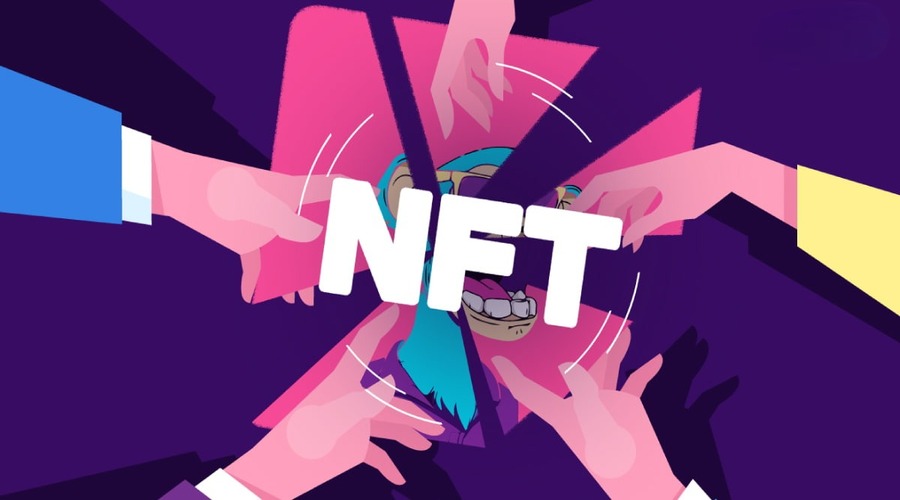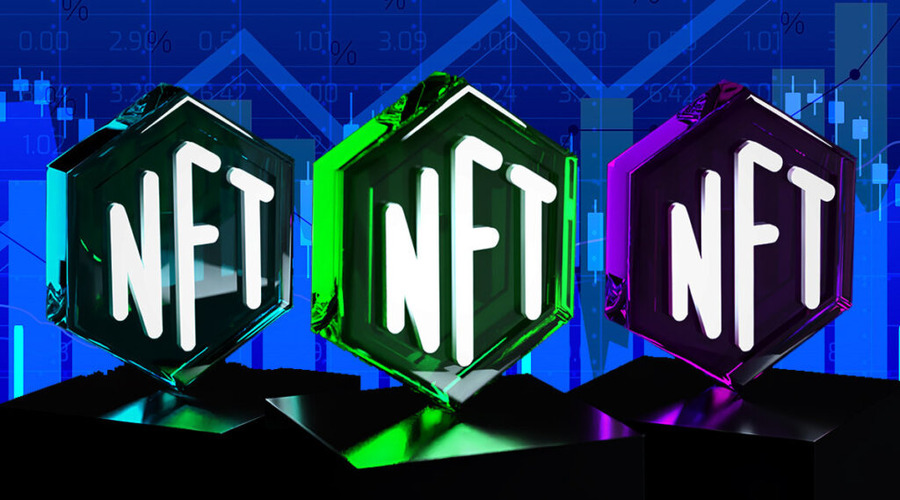NFTs, or non-fungible tokens, have taken the digital world by storm, revolutionizing the way we perceive and trade digital assets. These unique digital tokens, built on blockchain technology, represent ownership of various digital assets such as art, music, videos, and virtual real estate. Recently, a new trend has emerged in the non-fungible token space called fractionalization, which allows multiple investors to own a fraction of a non-fungible token. While NFT fractionalization offers exciting opportunities for investors, it also comes with its fair share of risks and security considerations that must be carefully evaluated.
What is NFT Fractionalization?
NFT fractionalization refers to the process of dividing an NFT into smaller fractions, allowing multiple investors to purchase and own a portion of the token. These fractions, often referred to as “shares,” represent a specific percentage of the NFT’s value and ownership rights. Fractionalization platforms enable investors to buy and trade these shares, providing access to high-value NFTs that would otherwise be unaffordable to individual investors.
The Benefits of NFT Fractionalization
NFT fractionalization opens up a range of benefits for both investors and creators:
- Enhanced Liquidity: NFT fractionalization increases liquidity in the market by allowing investors to buy and sell fractions of an NFT. This means that investors no longer need to wait for a complete ownership transfer to trade their NFT holdings. They can easily sell a portion of their non-fungible token and retain partial ownership, providing more flexibility in managing their investment portfolios.
- Diversification Opportunities: Fractionalization enables investors to diversify their NFT holdings by owning fractions of multiple NFTs. Instead of investing a significant amount in a single non-fungible token, investors can allocate smaller amounts across various fractionalized NFTs. This diversification strategy helps mitigate risk and potentially maximize returns by spreading investments across different assets.
- Access to High-Value NFTs: Fractionalization opens up access to premium and high-value NFTs that may have been unaffordable for individual investors. By pooling resources together, investors can collectively invest in these valuable NFTs, unlocking opportunities to participate in the appreciation and potential financial gains of such assets.
- Democratization of the Market: Fractionalization democratizes the NFT market by allowing broader participation. Investors who may not have had the financial means to acquire a complete non-fungible token can now own a fraction of it, sharing in the ownership and potential returns. This broader participation increases inclusivity and allows a wider range of individuals to engage in the NFT space.
- Reduced Barrier to Entry for Creators: Fractionalization benefits creators as well. It provides a mechanism for artists and content creators to raise funds by selling fractional ownership of their NFTs. This can be particularly useful for emerging artists who want to monetize their work and gain exposure in the market without having to sell their entire non-fungible token outright.
- Increased Exposure and Secondary Market Potential: Fractionalized NFTs can attract more attention and generate increased exposure due to their accessibility to a larger pool of investors. This increased exposure can drive demand and potentially increase the value of the fractionalized NFTs in the secondary market. Investors also have the opportunity to buy and sell fractional shares, allowing them to capture potential gains as the market evolves.
Risks Associated with NFT Fractionalization

While NFT fractionalization presents exciting opportunities, it is essential to be aware of the potential risks involved. Let’s explore some of the key risks associated with NFT fractionalization:
Market Volatility
The NFT market is known for its volatility, and fractionalized NFTs are no exception. The value of an NFT can fluctuate rapidly, influenced by factors such as demand, celebrity endorsements, and market trends. Investors should carefully evaluate the potential risks of investing in fractionalized NFTs and be prepared for price fluctuations. It’s important to consider both the short-term volatility and the long-term potential of the non-fungible token market before making investment decisions.
Lack of Regulation
As the NFT market is relatively new and rapidly evolving, it lacks comprehensive regulation. This regulatory vacuum leaves investors vulnerable to fraudulent activities and scams. It is crucial to conduct thorough research and choose reputable fractionalization platforms that adhere to industry best practices. Look for platforms that have transparent operations, clear terms of service, and a strong track record in the market. Additionally, stay informed about any regulatory developments and be cautious of platforms that operate in unregulated jurisdictions.
Counterfeit Tokens
The risk of counterfeit tokens is an inherent challenge in the non-fungible token space, and fractionalization can amplify this risk. Investors must ensure that the fractionalization platform has robust verification processes in place to validate the authenticity of the original non-fungible token. Otherwise, they may unknowingly invest in counterfeit or unauthorized fractions. Verify that the platform conducts rigorous due diligence on the NFTs they offer for fractionalization, including verifying the ownership rights and authenticity of the original asset. Transparency and proper documentation are essential to mitigate the risk of investing in counterfeit tokens.
Technical Vulnerabilities
Fractionalization platforms operate using smart contracts, which are susceptible to technical vulnerabilities. Smart contract bugs or exploits can lead to financial losses or compromise the security of the non-fungible token. Investors should choose platforms that conduct regular smart contract audits and prioritize security measures. Look for platforms that have a history of engaging reputable third-party auditors to review their smart contracts for potential vulnerabilities. Additionally, consider platforms that have a bug bounty program in place, encouraging the community to identify and report any vulnerabilities for swift resolution.
Security Breaches
Security breaches pose a significant risk in the NFT space, and fractionalization platforms are no exception. These platforms hold sensitive user data and manage valuable non-fungible token assets. It is crucial to select platforms that implement robust security protocols, including encryption, two-factor authentication, and cold storage for private keys. Ensure that the platform has a strong focus on security and employs industry-standard security practices. Research the platform’s security measures and check for any history of security breaches or incidents. Additionally, consider using secure hardware wallets or offline storage options for storing private keys to minimize the risk of unauthorized access.
Lack of Transparency
One of the risks associated with NFT fractionalization is the lack of transparency in the underlying assets. It can be challenging for investors to obtain complete information about the non-fungible token being fractionalized, such as its history, provenance, and any potential legal or ownership issues. Without proper transparency, investors may unknowingly invest in fractionalized NFTs that have undisclosed liabilities or controversies. It’s essential for fractionalization platforms to prioritize transparency and provide comprehensive information about the underlying NFTs to ensure informed investment decisions.
Regulatory Uncertainty
The NFT market is still in its early stages, and regulatory frameworks around non-fungible token fractionalization are evolving. The lack of clear regulations and legal guidelines can create uncertainty for investors and platforms alike. Different jurisdictions may have varying interpretations of how fractionalized NFTs should be classified and regulated. Investors should be aware of the legal landscape and any regulatory developments in their jurisdiction before participating in NFT fractionalization. Platforms should also stay informed about regulatory changes and adapt their operations to comply with evolving requirements.
Security Considerations for NFT Fractionalization
To mitigate the risks associated with NFT fractionalization, it is essential to consider various security measures. Here are some key security considerations for investors and platforms:
- Smart Contract Audits: Before investing in a fractionalized non-fungible token, investors should verify whether the smart contract powering the fractionalization has undergone a thorough security audit. Audits conducted by reputable third-party firms can identify potential vulnerabilities and provide assurance of the smart contract’s integrity.
- Secure Wallets and Custody Solutions: Investors should ensure that their wallets or custody solutions offer robust security features. This includes using hardware wallets or secure wallet apps with strong encryption, multi-factor authentication, and offline storage options.
- Identity Verification: Fractionalization platforms should implement robust identity verification procedures to prevent unauthorized access and combat fraudulent activities. Users should be required to complete a rigorous verification process, including KYC (Know Your Customer) checks.
- Insurance Coverage: Investors may consider platforms that offer insurance coverage for NFT assets in case of theft, loss, or fraud. Insurance can provide an additional layer of protection and give investors peace of mind when participating in fractionalization.
- Education and Awareness: Both investors and platforms should prioritize education and awareness regarding NFT fractionalization risks and security best practices. Platforms should provide clear guidelines and resources to help users make informed decisions, while investors should stay updated on the latest developments in the NFT space.
Conclusion
NFT fractionalization has the potential to revolutionize the way individuals invest in and trade high-value NFTs. However, it is crucial to approach this emerging trend with caution and awareness. Understanding the risks associated with non-fungible token fractionalization and implementing robust security measures can help protect investors and ensure the long-term growth and sustainability of the NFT market.
FAQs
- What is NFT fractionalization?
NFT fractionalization refers to the process of dividing an NFT into smaller fractions, allowing multiple investors to purchase and own a portion of the token. - How can I protect my NFT investments from security risks?
To protect your NFT investments, consider using secure wallets, verifying smart contract audits, implementing strong authentication measures, and staying informed about the latest security practices. - Are there any regulations in place for NFT fractionalization?
Currently, the NFT market lacks comprehensive regulations. Investors should exercise caution and choose reputable fractionalization platforms that adhere to industry best practices. - Can NFT fractionalization lead to the devaluation of the original NFT?
While fractionalization may increase liquidity and accessibility, it does not necessarily lead to the devaluation of the original NFT. The value of a non-fungible token is influenced by various factors, including demand and scarcity. - Is NFT fractionalization suitable for all types of NFTs?
Fractionalization is most commonly used for high-value NFTs. However, its suitability depends on the specific NFT and the demand from investors interested in fractional ownership.
